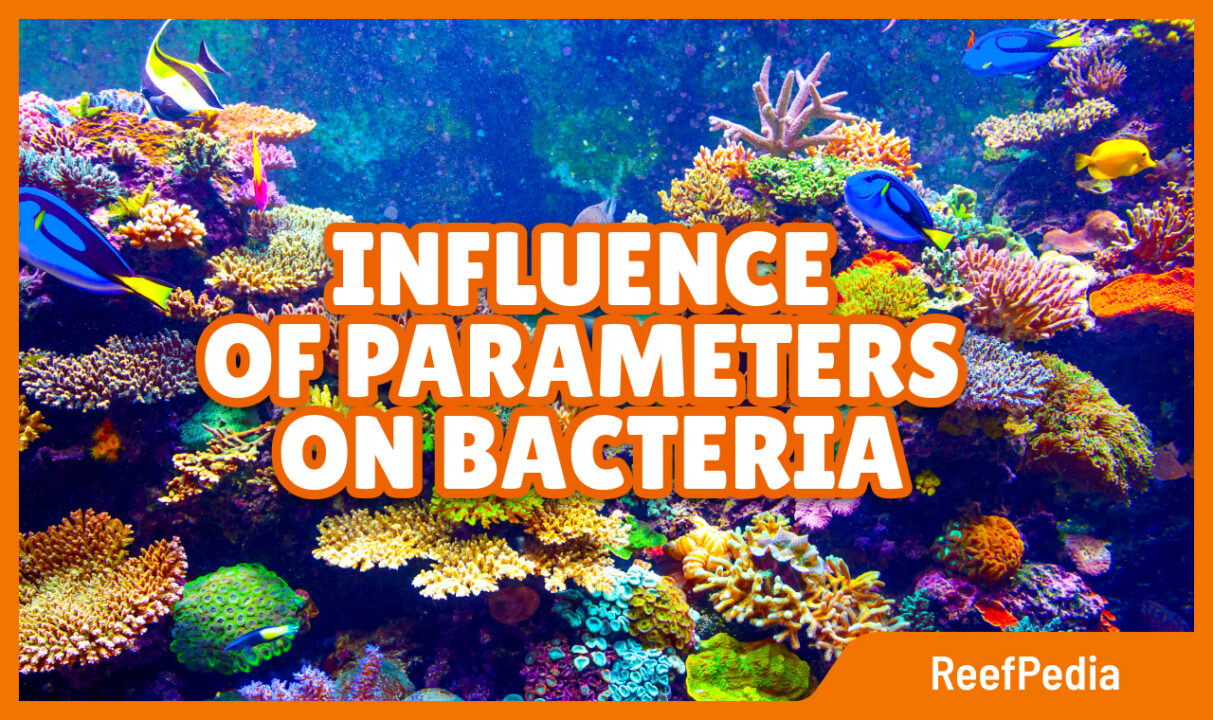Bacteria world
Living organisms in the aquarium, including microorganisms such as bacteria and algae, have their own specific optimal conditions, which are not constant for all microorganisms. This environment shapes who will gain an advantage in a given aquarium.
Biological processes in the aquarium can occur up to certain limits in fluctuations of pH or temperature, after exceeding the limit values, they stop sharply. The speed of the reaction changes and the enzymes involved in the reactions may become inactivated. If the aquarium pH falls below 6, the bacteria will not be able to effectively process the ammonia in the water. If the pH rises above 9, too much toxic ammonia begins to appear in the water. Bacteria prefer a pH range of 7.0 to 8.0.
The temperature range, optimal for nitrogen cycle processes, is within the temperatures that allow life in the aquarium.
The effect of environmental acidification on coral reefs is currently being studied. In the marine environment, it may be associated with changes in biogeochemical cycles. It’s been shown that when pH decreases, pathogenic and opportunistic microorganisms such as Vibrionaceae and Alteromonadaceae increase in number and there is a loss of putatively symbiotic Endozoicomonas spp.
With temperature stress, changes are seen in the microbial community, especially in the coral microbiome, where good and beneficial microbes are replaced by opportunistic or pathogenic bacteria. The symbiosis of zooxanthellae with corals is also very sensitive, especially to elevated water temperatures, which is manifested by the expulsion of Symbiodinium spp., causing coral bleaching.
It’s likely that environmental conditions (e.g. temperature, irradiance, nutrient availability), together with the coral’s physiological state (e.g. health, reproductive status, etc.) influence the mucus secreted by corals. This mucus contains polymers that form a highly hydrated viscoelastic polymer gel composed of fucose, arabinose, mannose, galactose and small amounts of residual glucose. It was found that the coral mucus supports high bacterial growth, and the products of its degradation and the bacteria living on this mucus can be used as sources of nutrients by other organisms. That is why maintaining stable parameters is so important in maintaining the stability of the entire ecosystem in the aquarium.
About Author

Agata Łobocka
I’m an industrial biotechnologist by education. I’m fascinated by microbiology and the influence of the microworld on everything that surrounds us. Professionally, I create products based on microorganisms that are more environmentally friendly than classic, popular preparations.
Before I started my adventure at Reef Factory, I was widely interested in freshwater aquaristics. In the world of marine aquaristics, I was most fascinated by the huge network of dependencies created by corals with their symbiotic microorganisms. These relationships perfectly show that organisms need their microfriends to function in health, and every element of this relationship benefits from it.
Privately, I’m interested in new technologies that counteract the negative impact of man on the environment. I'm also into self-development, cognitive science and popular science literature. I like to spend my free time actively, surrounded by beautiful nature.
I hope that my articles from the Biology section o ReefPedia will help you better understand the life in a marine aquarium.

